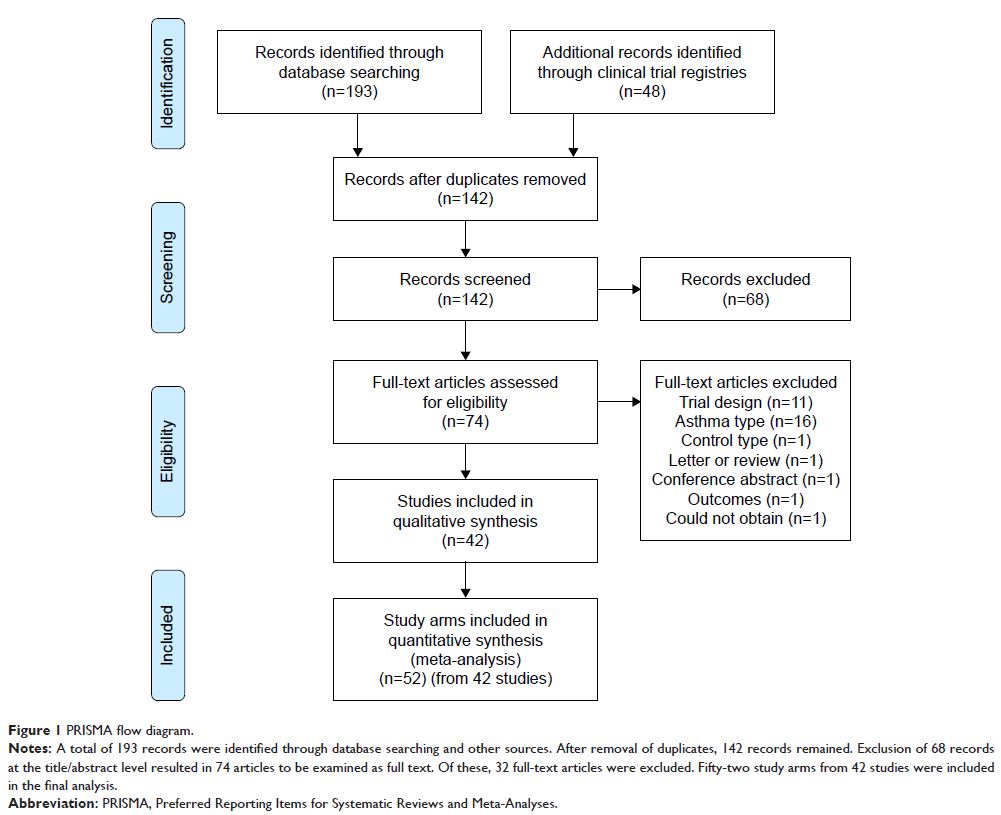9 0 5 7 8
论文已发表
注册即可获取德孚的最新动态
IF 收录期刊
- 2.6 Breast Cancer (Dove Med Press)
- 3.9 Clin Epidemiol
- 3.3 Cancer Manag Res
- 3.9 Infect Drug Resist
- 3.6 Clin Interv Aging
- 4.8 Drug Des Dev Ther
- 2.8 Int J Chronic Obstr
- 8.0 Int J Nanomed
- 2.3 Int J Women's Health
- 3.2 Neuropsych Dis Treat
- 4.0 OncoTargets Ther
- 2.2 Patient Prefer Adher
- 2.8 Ther Clin Risk Manag
- 2.7 J Pain Res
- 3.3 Diabet Metab Synd Ob
- 4.3 Psychol Res Behav Ma
- 3.4 Nat Sci Sleep
- 1.9 Pharmgenomics Pers Med
- 3.5 Risk Manag Healthc Policy
- 4.5 J Inflamm Res
- 2.3 Int J Gen Med
- 4.1 J Hepatocell Carcinoma
- 3.2 J Asthma Allergy
- 2.3 Clin Cosmet Investig Dermatol
- 3.3 J Multidiscip Healthc

静脉注射茶碱治疗急性哮喘的疗效和副作用:系统综述和荟萃分析
Authors Mahemuti G, Zhang H, Li J, Tieliwaerdi N, Ren L
Received 8 November 2017
Accepted for publication 5 December 2017
Published 10 January 2018 Volume 2018:12 Pages 99—120
DOI https://doi.org/10.2147/DDDT.S156509
Checked for plagiarism Yes
Review by Single-blind
Peer reviewers approved by Dr Palas Chanda
Peer reviewer comments 2
Editor who approved publication: Dr Qiongyu Guo
Background and
objective: Theophylline has been used for
decades to treat both acute and chronic asthma. Despite its longevity in the
practitioner’s formulary, no detailed meta-analysis has been performed to
determine the conditions, including concomitant medications, under which
theophylline should be used for acute exacerbations of asthma. We aimed to
quantify the usefulness and side effects of theophylline with or without
ethylene diamine (aminophylline) in acute asthma, with particular emphasis on
patient subgroups, such as children, adults, and concomitant medications.
Methods: We searched PubMed, EMBASE, The Cochrane Library, ClinicalTrials.gov, and the WHO Clinical Trials Registry for randomized,
controlled clinical trials. We planned a priori subgroup analyses by time
post-medication, concomitant medication, control type, and age.
Results: We included 52 study arms from 42 individual trials. Of these, 29 study
arms included an active control, such as adrenaline, beta-2 agonists, or leukotriene
receptor antagonists, and 23 study arms compared theophylline (with or without
ethylene diamine) with placebo or no drug. Theophylline significantly reduced
heart rate when compared with active control (p =0.01)
and overall duration of stay (p =0.002), but
beta-2 agonists were superior to theophylline at improving forced expiratory
volume in one second (FEV1) (p =0.002).
Theophylline was not significantly different from other drugs in its effects on
respiratory rate, forced vital capacity (FVC), peak expiratory flow rate,
admission rate, use of rescue medication, oxygen saturation, or symptom score.
Closer examination of the data revealed that the medications given in addition
to theophylline or control significantly changed the effectiveness of theophylline
(subgroup difference: p <0.00001).
Conclusion: Given the low cost of theophylline, and its similar efficacy and
rate of side effects compared with other drugs, we suggest that theophylline,
when given with bronchodilators with or without steroids, is a cost-effective
and safe choice for acute asthma exacerbations.
Keywords: theophylline, theophylline with ethylene diamine, aminophylline,
asthma, bronchodilators, beta-2 agonists, adrenaline, FEV, PEFR, affordable
drugs
